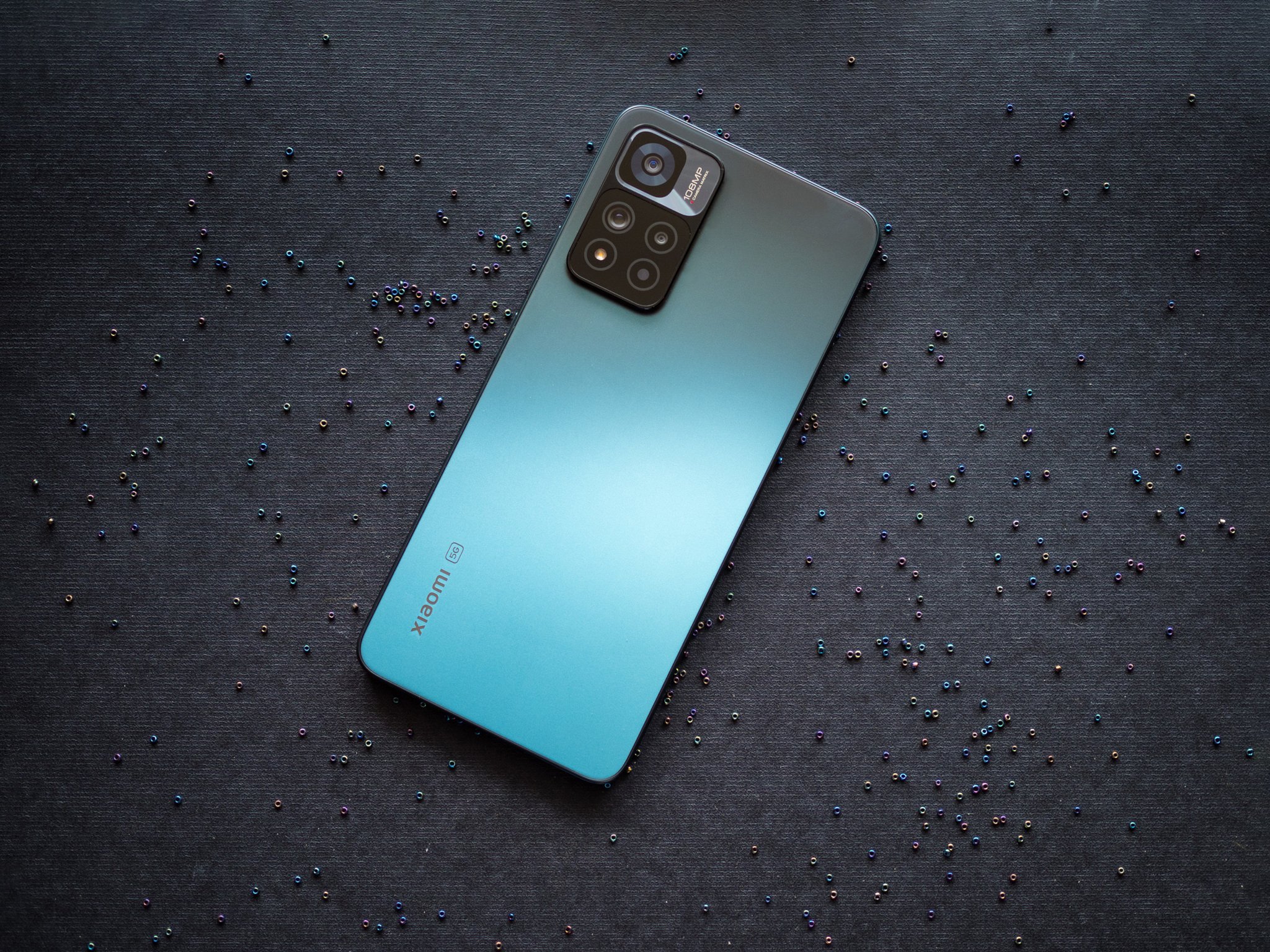Android Central Verdict
Bottom line: The Xiaomi 11i has 120W fast charging, and it charges the 4500mAh battery fully in under 20 minutes. The internal hardware is also decent for gaming and daily use, and there's a 120Hz AMOLED screen, IP53 water resistance, and a 3.5mm jack. But the phone doesn't hold up to its rivals when it comes to low-light imagery, it runs Android 11 out of the box, and it won't get as many software updates.
Pros
- +
Vibrant 120Hz AMOLED panel
- +
Good hardware for the price
- +
Charges faster than any other phone in India
- +
Decent cameras for daylight use
- +
IP53 water resistance and 3.5mm jack
Cons
- -
Doesn't actually charge at 120W
- -
Cameras struggle in low-light situations
- -
Still on Android 11
- -
Lackluster software updates
Why you can trust Android Central
Xiaomi unveiled the Mi 10i in India back in January 2021, and the phone went to on to sell moderately well in the country. So the manufacturer did what it is known for and launched a lot of devices in the mid-range category. Between the Mi 11 Lite, 11 Lite NE 5G, Mi 11X, 11X Pro, and the POCO F3 GT, Xiaomi has more than enough options available.
To kick things off in 2022, Xiaomi is introducing the Xiaomi 11i, and it is positioning 120W fast charging as the differentiator. Now, this isn't the first Xiaomi phone to offer 120W wired charging — that honor belongs to the Xiaomi 11T Pro. But the 11i aims to bring the feature to a more mainstream audience, much like the Mi 10i did with its 108MP camera last year.
Xiaomi says the 11i takes just 15 minutes to fully charge its 4500mAh battery, and I'll be putting that to the test here. As you'd imagine from a Xiaomi phone, you get decent internal hardware, and the 11i is being positioned as a good value. With plenty of great options to pick from in this segment, should you buy the Xiaomi 11i for its 120W charging? Let's find out.
About this review
I used the Xiaomi 11i for four days before writing this review. The phone came with MIUI 12.5.1 out of the box and did not receive any software updates in that time. Xiaomi India furnished the unit to Android Central for review.
Xiaomi 11i: Price and availability
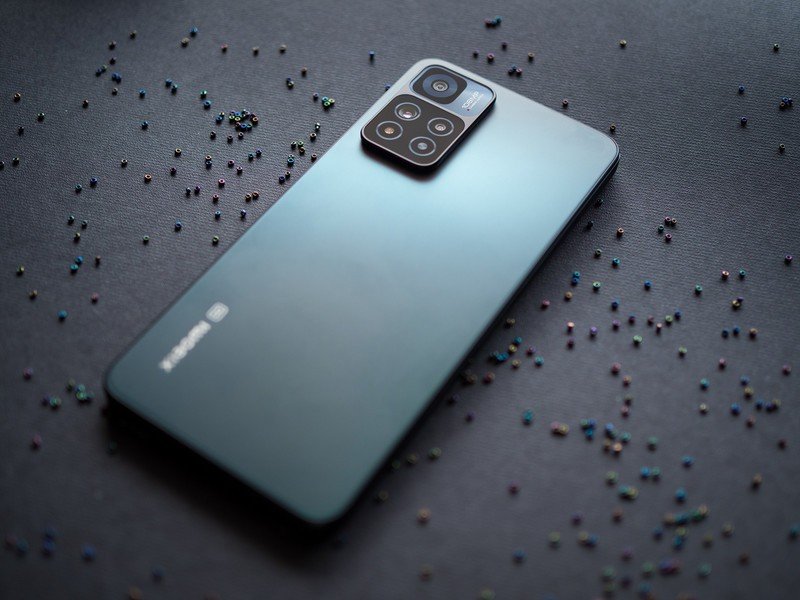
Xiaomi unveiled the 11i series in India on January 6, with the phones going up for sale from January 12. The phone is sold in two models: the base version has 67W fast charging and a 5160mAh battery, and the Xiaomi 11i HyperCharge features 120W fast charging and a 4500mAh dual-cell battery. So you can get a larger battery or faster charging, but not both in the same phone.
The Xiaomi 11i is available in two variants: the 6GB/128GB model debuts at ₹26,999 ($365) while the 8GB/128GB version is at ₹28,999 ($390). This is for the 120W version of the device; if you're opting for the 67W model, you get to shave off ₹2,000 ($27) on either model. I'm testing the 120W model, but if I had to buy one for my own use, I'd go with the 67W variant — other than the charging tech and battery size, there's no difference between the two.
Get the latest news from Android Central, your trusted companion in the world of Android
Like all Xiaomi phones, the 11i is sold via a flash sale model, with the first set of units selling out in under five minutes. So if you miss the sale, you will have to wait until the next one and cross your fingers that you can get your hands on the phone then. Or you can always pick up one of the alternatives I've highlighted at the end of the review — there's no shortage of value-focused phones in this category.
Xiaomi 11i: Design and display
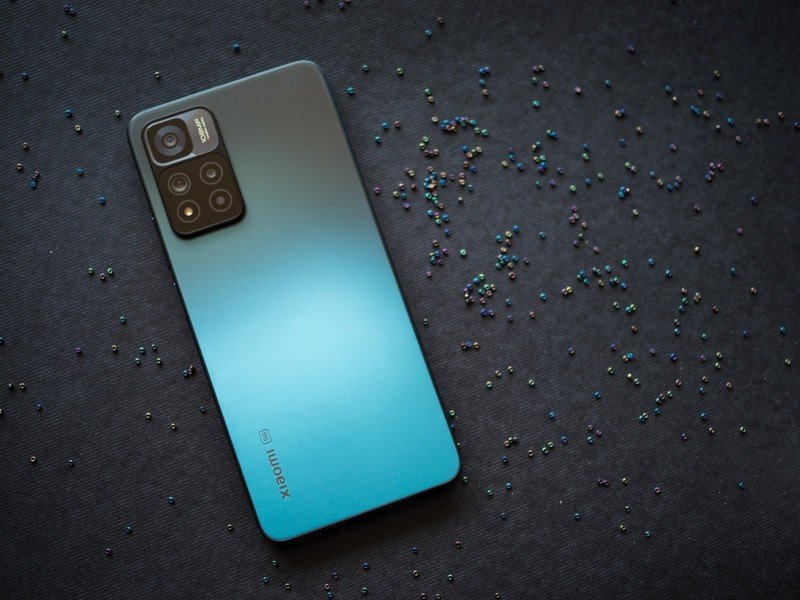
If there's one constant about the design of Xiaomi's mid-range series, it's that it constantly changes. There's no overall design aesthetic that ties different generations together, with Xiaomi switching between various textures, finishes, and designs each year.
The 11i doesn't share any resemblance to earlier Xiaomi phones, but it is just as bulky and unwieldy.
The result is that the Xiaomi 11i has a rectangular chassis that doesn't conform to any design language that we've seen in the past. That said, I like the design, if only because there's some character to it — unlike the Xiaomi 11T. The phone has a glass front and back, and while you get Gorilla Glass 5 at the front, there's no such protection at the back; you will have to use a case if you're interested in picking up this phone.
The mid-frame itself is made out of polycarbonate, and it has a matte texture that feels good. The back looks intriguing thanks to the frosted glass finish, but you won't be able to show that off because it'll be under a case. Xiaomi sells the phone in four color options, but availability varies based on the color you choose.
Dominating the design at the back is the large camera housing that sees the main 108MP module sit within its own island, and it's joined by two auxiliary modules and LED flash that are housed in a grid underneath. The camera housing juts out considerably from the chassis of the device, and it leads to noticeable wobble when using the phone on a flat surface.
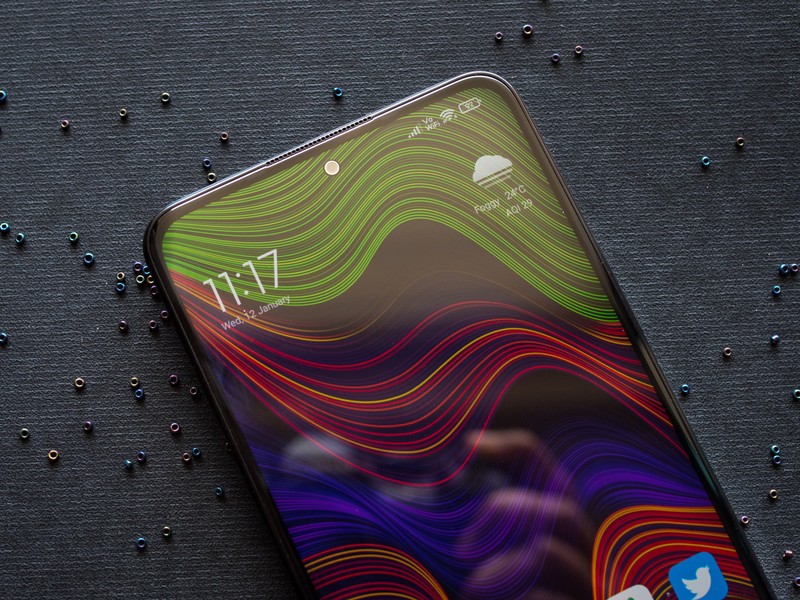
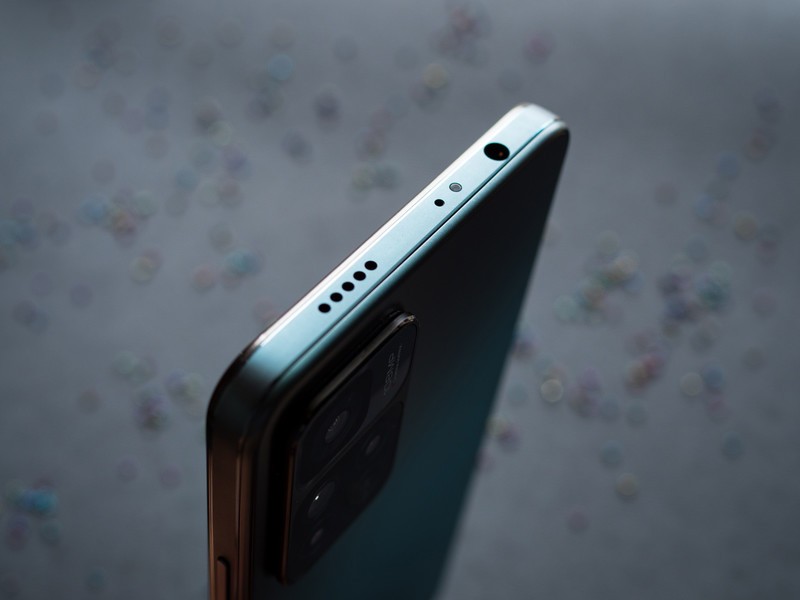
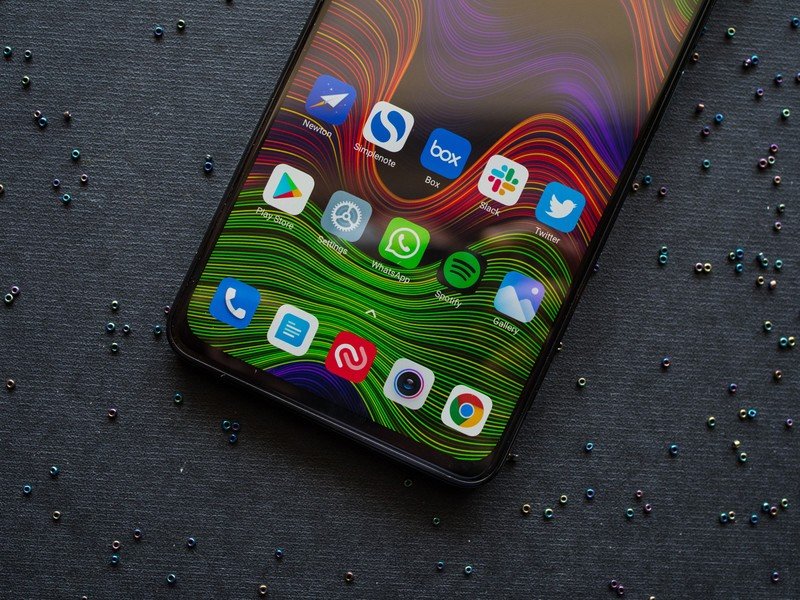

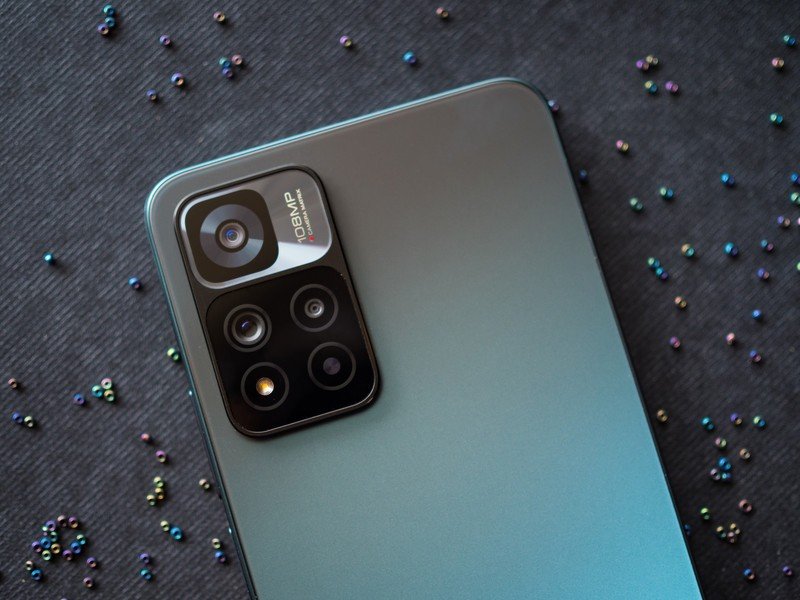
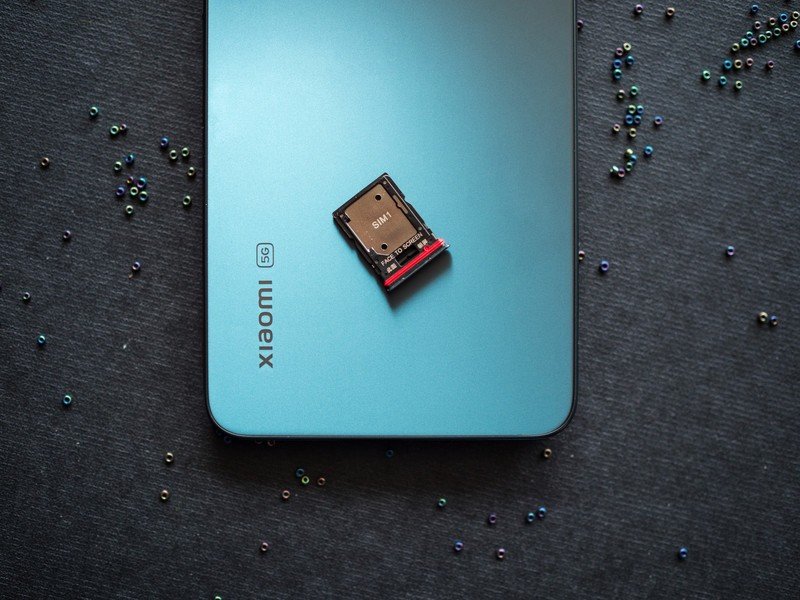

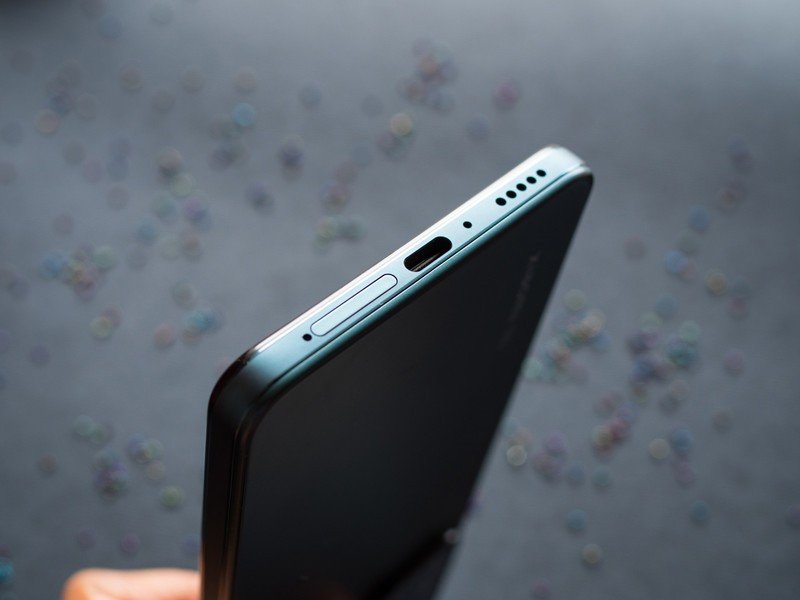
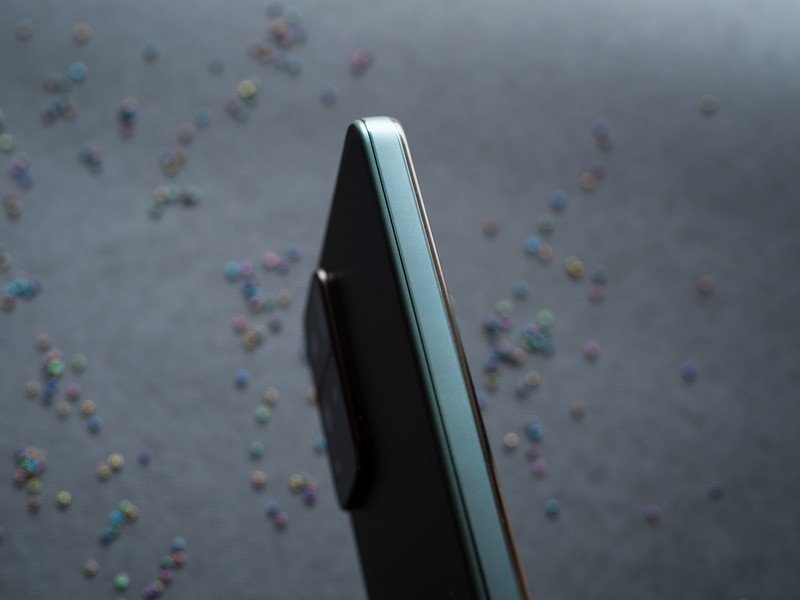
The phone has the power button and volume rocker on the right, and the fingerprint sensor is baked into the power button. You'll find the SIM card slot at the bottom next to the charging port, and it holds two SIM cards with an option to use a MicroSD card in the secondary SIM slot. Elsewhere, the Xiaomi 11i retains the IR blaster that Xiaomi has been adding on its devices for nearly a decade now.
As for usability, the 11i is considerably heavy at 204g, and it is fairly bulky as well, measuring 163.7 x 76.2 x 8.3mm. I'm using the phone alongside the Galaxy S21 FE, and while it also has the same 4500mAh battery, it is considerably lighter at 177g. I don't understand why the Xiaomi 11i gets all the extra heft, but if there's one brand that does needlessly bulky phones, it is Xiaomi. The result of that weight and bulk is that the 11i isn't the easiest phone to use in this category.
Xiaomi offers IP53 dust and water resistance as standard on its mid-range devices now, and you'll find the same on the Xiaomi 11i as well. While it isn't the same as the IP68 rating that you get on the Galaxy A52, it is a good move from Xiaomi to offer some protection against dust and water ingress.
There are more elegant designs in this category, and what the Xiaomi 11i lacks in style it makes up for in terms of features.

There's little to talk about the screen on the Xiaomi 11i. You get a 6.67-inch AMOLED panel with 120Hz refresh rate, and it ticks all the right boxes: color vibrancy is great, there are no issues with brightness, and it has 360Hz touch polling. The cutout for the front camera is smaller than last year as well.
The 120Hz AMOLED and stereo sound make the Xiaomi11i a decent option for gaming.
The panel has HDR10, and it comes into its own when streaming videos or playing games. The Xiaomi 11i has stereo sound with identical channels located at both ends, and that makes a big difference. The phone brings back the 3.5mm jack, and while I'm glad that Xiaomi added the jack here, there doesn't seem to be any sort of consistency around what devices or segments where you'll find it. The Mi 11X and Mi 11 Lite/Lite NE omitted the jack, and although the 11i is sold in the same category, it gets the port.
You'll find a Gorilla Glass 5 layer for the screen, and there's plenty of customizability for the panel itself. You can adjust the color balance, set up always-on mode, and schedule dark mode with ease on the device. All things considered, I don't have any issues with the screen on the Xiaomi 11i.
Xiaomi 11i: Performance
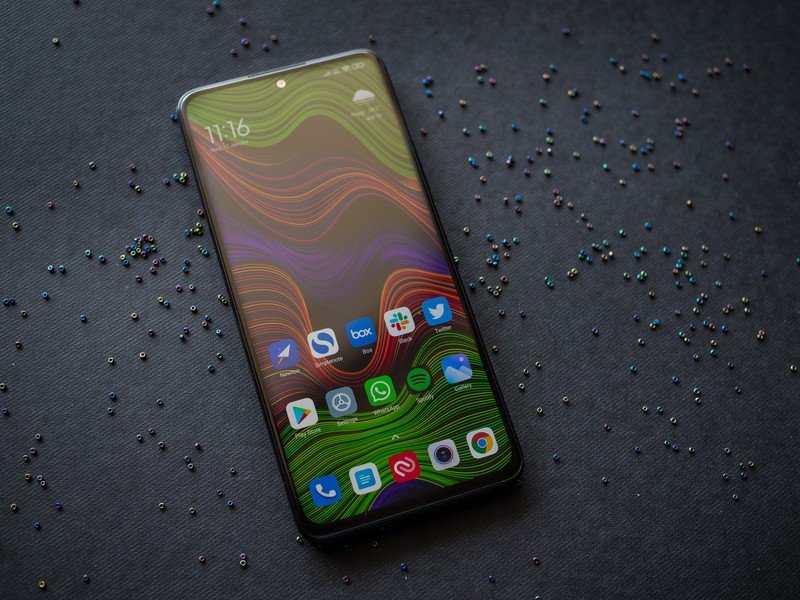
More and more devices in this category are starting to use MediaTek-powered designs, and Xiaomi is getting on that bandwagon with the 11i. The phone features the Dimensity 920 platform with two Cortex A78 cores that do the heavy lifting and six Cortex A55 for energy-efficient tasks.
| Specs | Xiaomi 11i |
|---|---|
| Software | MIUI 12.5 based on Android 11 |
| Display | 6.67-inch (2400x1080) 120Hz AMOLED |
| Chipset | 2.50GHz MediaTek Dimensity 920 |
| RAM | 6GB/8GB |
| Storage | 128GB |
| Rear Camera 1 | 108MP ƒ/1.9 (primary) |
| Rear Camera 2 | 8MP ƒ/2.2 (wide-angle) |
| Rear Camera 3 | 2MP ƒ/2.4 (macro) |
| Front Camera | 16MP ƒ/2.5 |
| Connectivity | Wi-Fi 6, BT5.2 |
| Battery | 4500mAh | 120W |
| Security | Side-mounted fingerprint |
| Colors | Green, Black, Blue |
| Dimensions | 163.7 x 76.2 x 8.3mm |
| Weight | 204g |
The Mali-G68 isn't quite as powerful as the G77 that's featured in the Dimensity 1200, but it is decent enough for gaming. As for general use, I didn't see any slowdowns in the four days I used the device, and while I didn't game a lot, the few titles I tried out were lag-free.
Like other mid-range phones, the Xiaomi 11i has a decent selection of 5G bands: 1, 3, 5, 8, 28, 40, 77, and 78. You get dual 5G connectivity as well, but with 5G not set to kick off in India for another year or so, this is a feature you'll only need to care about in the future.
As for other connectivity, you get a Wi-Fi 6 modem, Bluetooth 5.2, and a vibration motor that delivers good feedback. What I find irritating about Xiaomi's phones in India is that most of the budget and mid-range options lack NFC, and that's the case here as well. I don't see why the brand refuses to add the feature; while NFC isn't used as widely in the country for payments, it is increasingly seeing utility for connecting to wireless earbuds with fast pair, and you miss out on that with the 11i.
In terms of memory, the Xiaomi 11i offers 6GB of RAM and 128GB of storage for the base model, and there's an 8GB model that also has 128GB of storage. There's no 256GB variant, and I feel like that's an omission considering other mid-range phones are configurable with additional storage and memory.
The side-mounted fingerprint reader works unerringly well and is fast to authenticate, and you get the ability to set up gesture actions for the sensor; just double-press the sensor to pull down the notification shade.
Xiaomi 11i: Battery life and charging

Because Xiaomi is using 120W as the key marketing metric for the Xiaomi 11i, I decided to focus on this area a little bit more. Xiaomi offers a charger in the box that goes up to 120W, so you don't have to buy any other accessories to hit the full charging potential of the device.
One thing to note at this point is that the Xiaomi 11i doesn't actually charge at 120W. Although the charger itself is able to hit 120W (20V/6A), it does not deliver that to the device. Xiaomi clarified this during the briefing, and in my testing, I found that the maximum wattage that the charger was able to deliver was 95W.
Xiaomi doesn't even let you charge at 120W out of the box — you have to manually enable the feature.
In fact, 120W fast charging is disabled out of the box. The phone defaults to a 102W power profile that's introduced with the charger (17V/6A), and it relies on that in day-to-day use. To unlock the full charging speeds, you will have to go into the phone's settings, go to the battery section, and enable Boost charging mode.
It's interesting that Xiaomi added a 102W profile to the charger, because that's missing on the charger for the 11T Pro, which by default goes to 120W at 20V/6A. Xiaomi says it made the decision to limit the charging potential on the 11i to maintain thermal efficiency and not overheat the device. Basically, it tried to make sure the device doesn't go over 40 degrees Celsius when you're charging it — because you'll be able to feel that heat — and so it limited the charging mode out of the box.
This is a decidedly underhanded way of doing things, particularly when you consider that there's no way to enable the 120W mode when setting up the 11i. And while Xiaomi says it is making it clear on social media that the phone has a boost charging mode, regular customers walking into a retail store to pick up the phone will be unaware of the limitation. Basically, Xiaomi is using 120W charging in its marketing materials because the charger goes up to that wattage.
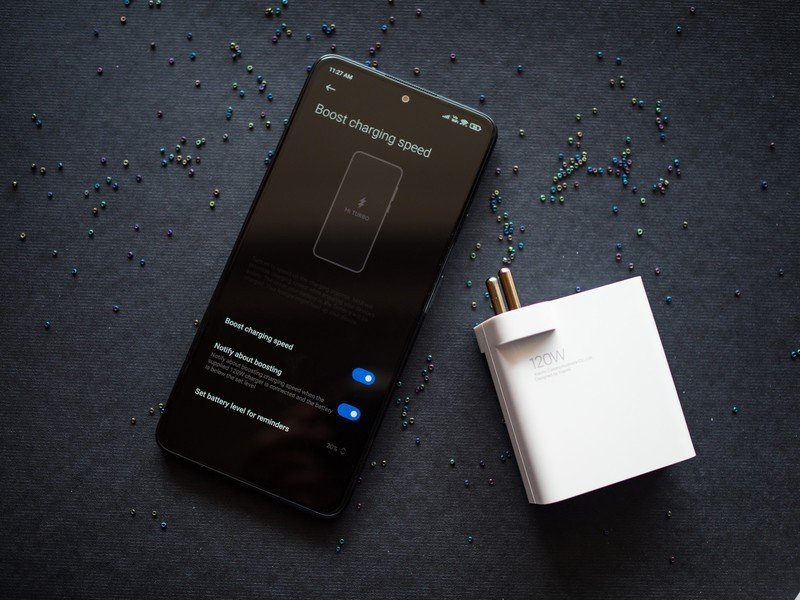
As for the battery itself, the Xiaomi 11i has a 4500mAh battery with a dual-cell design to maximize charging efficiency. The brand quotes a 15-minute time for charging the 4500mAh battery, but when I tried it out, it took just over 18 minutes to fully charge the device. I didn't see the charger go beyond 95W, and after it hit 30% it went down to 70W and maintained that wattage up to 75%.
You can get close to the 15-minute advertised figure, but there are a few caveats.
Although I didn't get close to Xiaomi's 15-minute figure, the 11i is able to charge in under 20 minutes. The inherent way that charging works is that you don't get the entire wattage; even on devices with 65W charging, the full charge isn't delivered at any time, instead hovering at the 55W figure.
With 120W charging tech, there's a more noticeable decrease in efficiency. Of course, there are other factors that will determine how effectively the 11i is able to handle the charge. My room was at 24 degrees Celsius when running the charging test, and to Xiaomi's credit I didn't see the phone go over 38.5 degrees Celsius. I had the screen off when testing the charge, and it will take longer if you're using the device while charging; it essentially falls back to a lower wattage to ensure it doesn't heat up too much.
Xiaomi says it has 34 safeguards to manage thermals and prevent overheating, and as for battery longevity, the brand notes that the phone will retain 80% of its charge level after 800 charges with boost mode enabled.
At the end of the day, Xiaomi's 120W solution is faster than other charging standards, so if you care about whether your phone takes under 20 minutes to fully charge, the 11i is a decent option. That said, the fact that Xiaomi intentionally limits the charging speeds on the phone without notifying users is inexcusable.
The standard Xiaomi 11i has 67W fast charging will fully charge the battery in just over 30 minutes, so you're looking at a difference of 10 minutes between the two variants.
Xiaomi 11i: Cameras
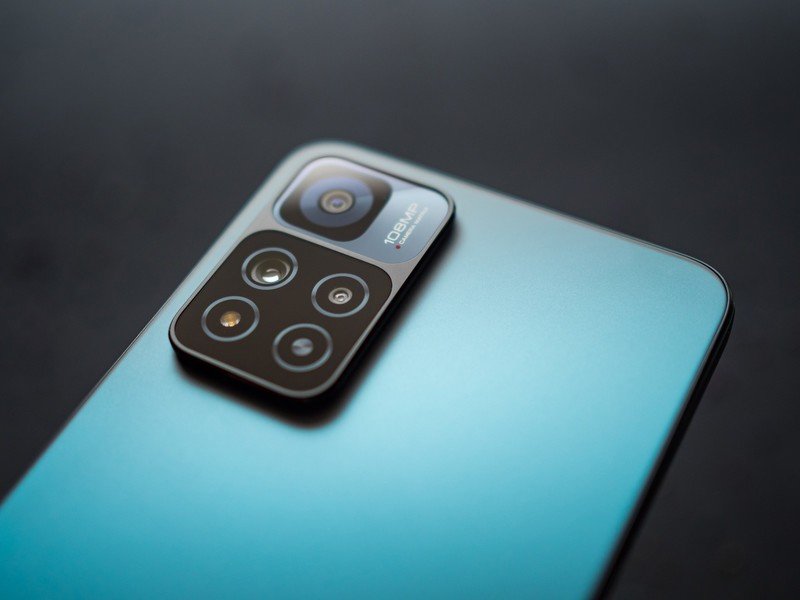
Xiaomi has used the 108MP camera module on most of its phones last year, and the Xiaomi 11i gets the Samsung HM2 sensor with 2.1um pixel size and 9-to-1 pixel binning that delivers 12MP photos. There is the option to take full-res 108MP shots if you want to do so, and you get a decent number of shooting modes.
The 108MP camera is flanked by an 8MP wide-angle lens with a 120-degree field of view, and a 2MP macro lens that's only there to fill out the camera housing. The camera interface itself is unchanged from last year, so if you've used a Xiaomi phone recently, you will be very familiar with the layout of the buttons and toggles.
There's no OIS here, and that adversely affects the camera in low-light situations. Like most devices in this category, you don't get 4K video at 60fps either, and video recording itself isn't as detailed as its immediate rivals.
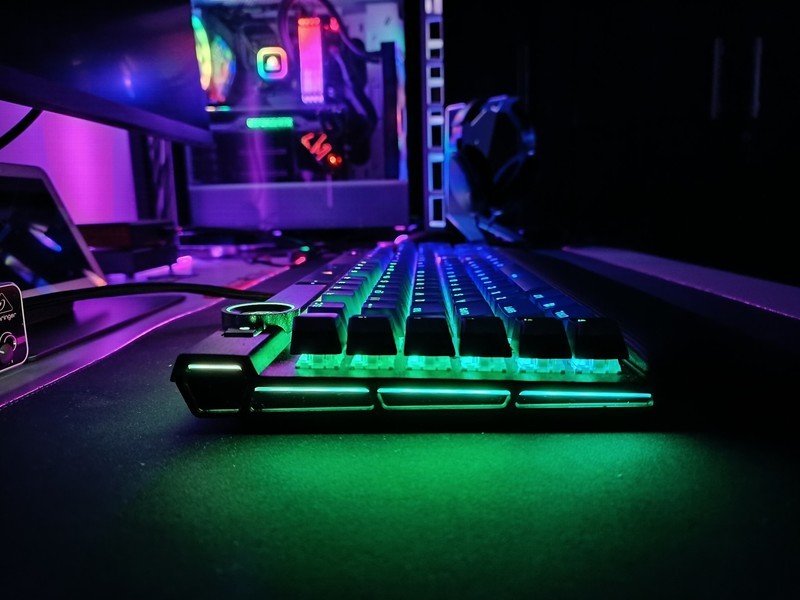


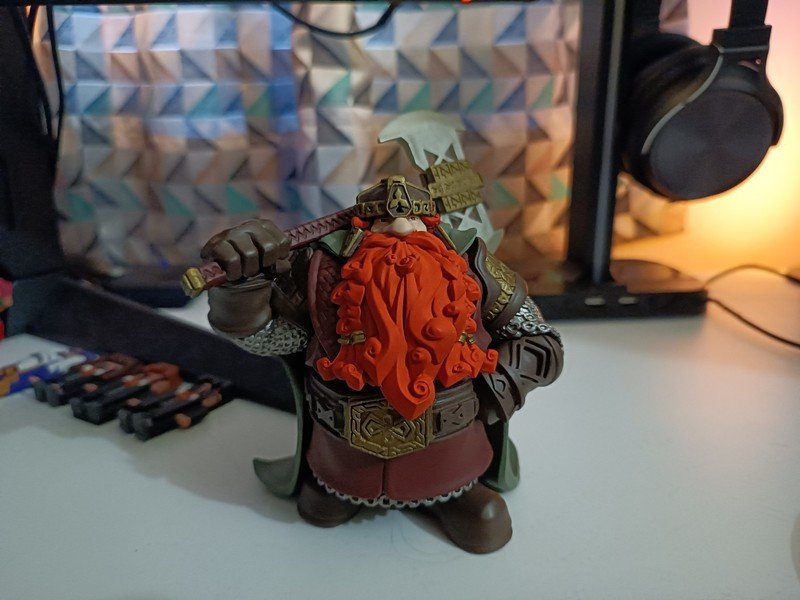


The camera takes decent photos in daylight conditions, delivering accurate colors and good dynamic range without any visible noise. The phone is able to dial in on a subject without any issues, and it generally manages to deliver a usable shot in the first go.
Where it struggles is in low-light situations; shots taken in less than ideal lighting conditions tend to have a lot of visible noise. Shadows are reduced to minimize noise levels in images with little to no lighting, and that means you miss out on finer details in the photo. Night mode does a little better in terms of preserving details, but for a device in this category, the Xiaomi 11i needs to do a lot more.
The wide-angle lens is a letdown as well, with the lens not able to deliver the same color balance as the primary module. It is nearly unusable at night, and as for the macro module, it really shouldn't exist on this device. Other brands are ditching auxiliary modules that serve little to no use, but Xiaomi isn't going to do that just yet.
Xiaomi 11i: Software
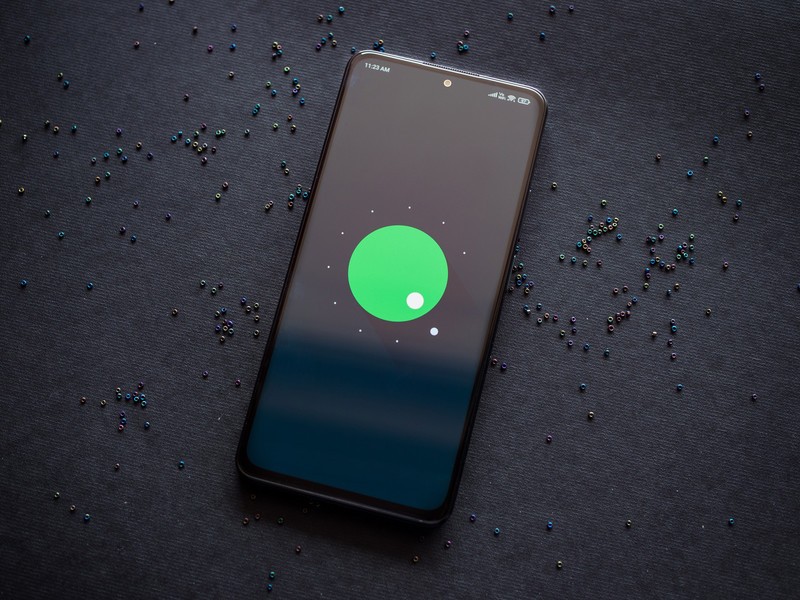
The Xiaomi 11i runs MIUI 12.5 based on Android 11 out of the box. Xiaomi says the 11i will be one of the first devices to get MIUI 13, but I've realized to not trust the brand when it comes to software updates — it has made far too many mistakes in this area. What you need to know for now is that you get Android 11 at launch, and with Xiaomi not guaranteeing three Android version updates, the device is only going to be updated to Android 13.
MIUI 12.5 is cleaner and better optimized, but the Xiaomi 11i continues to deliver annoying notifications.
Now, there is a lot to like in MIUI 12.5, and the ability to uninstall system apps is welcome. The interface itself looks polished, and there are a lot of customization options. I don't like the new Control Center that follows a split system for toggles and notifications — like iOS — and this is now the default option. You can switch back to the standard Android-style pane by going into the settings.
Xiaomi has also cut down on bloatware and ads on its devices, and for the most part, it feels good to use the Xiaomi 11i. But a few annoyances still linger; Xiaomi's first-party apps bombard you with notifications constantly, and it got so annoying after a while that I just disabled notifications for all of them.
At times, Xiaomi is obstinate in that it doesn't want to fix long-standing issues in MIUI, and that's mostly because it doesn't see them as problems. One of those issues is the screen refresh; most Xiaomi phones now come with 90Hz or 120Hz screens, but the brand continues to set 60Hz as the default refresh out of the box.
What's particularly annoying about this system is that there's no way to choose high refresh while setting up a device; you will have to go into settings later on and select the 90Hz or 120Hz mode. Xiaomi is the only brand that does this, and I just don't understand the reason for the same.
Then there's the fact that Xiaomi lags behind when it comes to software updates. Samsung does a much better job with both platform and security updates on its mid-range phones, and Xiaomi's Chinese rivals are also starting to roll out timely updates.
Xiaomi 11i: The competition

There's an abundance of choice in the mid-range category. The Nord 2 stood out as one of the best Android phones in this segment last year, and it continues to be a stellar choice in 2022. The Nord 2 features the beefier Dimensity 1200, and you get a great 120Hz AMOLED panel, cleaner software (yes, even with the ColorOS integration), 4500mAh battery with 65W fast charging, decent cameras, and Gorilla Glass 5 at the front and back. The Nord 2 is costlier at ₹29,999 ($405) for the 8GB/128GB model, but you get more powerful internals and a sleeker design that's easier to hold and use.
The Mi 11X is a solid alternative as well. The phone is a rebranded POCO F3 that's sold in India and select global markets, and it comes with a 120Hz AMOLED, Snapdragon 870, and a 48MP camera that is good enough for most situations. The 4520mAh battery lasts all day, but 33W fast charging isn't quite as fast as what you get on the Xiaomi 11i. That said, the Mi 11X is a good value all things considered at ₹27,999 ($380) for the 6GB/128GB model.
If you want a gaming phone, the POCO F3 GT uses a lot of the same hardware as the Nord 2, but you get a more aggressive design, and the 5020mAh battery ensures the device lasts a little longer. There's also 67W fast charging, and unique triggers on the side that let you customize in-game actions. It's a steal at ₹28,999 ($393) for the 8GB/128GB version.
Xiaomi 11i: Should you buy it?

You should buy this if ...
You want the fastest-charging phone in India
I'm sure another device will come along and claim this title, but at the start of 2022, the Xiaomi 11i is the fastest-charging phone in India. You can get the 4500mAh battery to fully charge in under 20 minutes, and the battery life itself is good enough for a day's worth of use.
You need a phone for gaming
Xiaomi knows how to deliver a good hardware package, and the combination of MediaTek's Dimensity 920 along with a vibrant 120Hz AMOLED screen and stereo sound means the Xiaomi 11i holds its own in this category.
You should not buy this if ...
You want the latest software and fast updates
Xiaomi isn't the fastest at delivering software updates, and the Xiaomi 11i launches with Android 11 out of the box. Furthermore, the phone is slated to get two platform updates, although other mid-rangers like the 11T series will receive three updates.
You need consistent cameras
The Xiaomi 11i doesn't necessarily have the best mid-range camera, and while the primary 108MP module manages to take good photos most of the time, it struggles with balancing highlights in low-light scenarios. The auxiliary modules aren't on par with what you'll find on other phones in this category.
Between the Mi 11 Ultra, Xiaomi 12, and the value-focused X/T/i series of devices, Xiaomi has branched out its offerings in the high-end and mid-tier categories. The brand notes that it witnessed an 8x increased in sales from 2020 to 2021, and a lot of that was down to its efforts in the sub-$400 market.
With the Xiaomi 11i, Xiaomi is trying to continue the momentum of last year's Mi 10i. The phone has a good AMOLED screen, robust internals, and the 120W fast charging makes for an easy sell. However, it isn't without its shortcomings: the camera isn't tuned well, the auxiliary sensors are not up to scratch, and it comes with Android 11 out of the box.
3.5 out of 5
The general state of Xiaomi's software updates isn't ideal. The brand mentioned it will roll out MIUI 13 to the 11i soon, but it didn't share any details as to how soon the update will be available. And while Xiaomi's high-end phones and value flagships now get three years of platform updates, the Xiaomi 11i isn't on that list.
So while there is a lot that the 11i gets right on the hardware front and charging tech, it doesn't deliver in the areas that matter, and that ultimately makes it a poor recommendation in a category that fields dozens of great products.

Harish Jonnalagadda is Android Central's Senior Editor overseeing mobile coverage. In his current role, he leads the site's coverage of Chinese phone brands, networking products, and AV gear. He has been testing phones for over a decade, and has extensive experience in mobile hardware and the global semiconductor industry. Contact him on Twitter at @chunkynerd.
